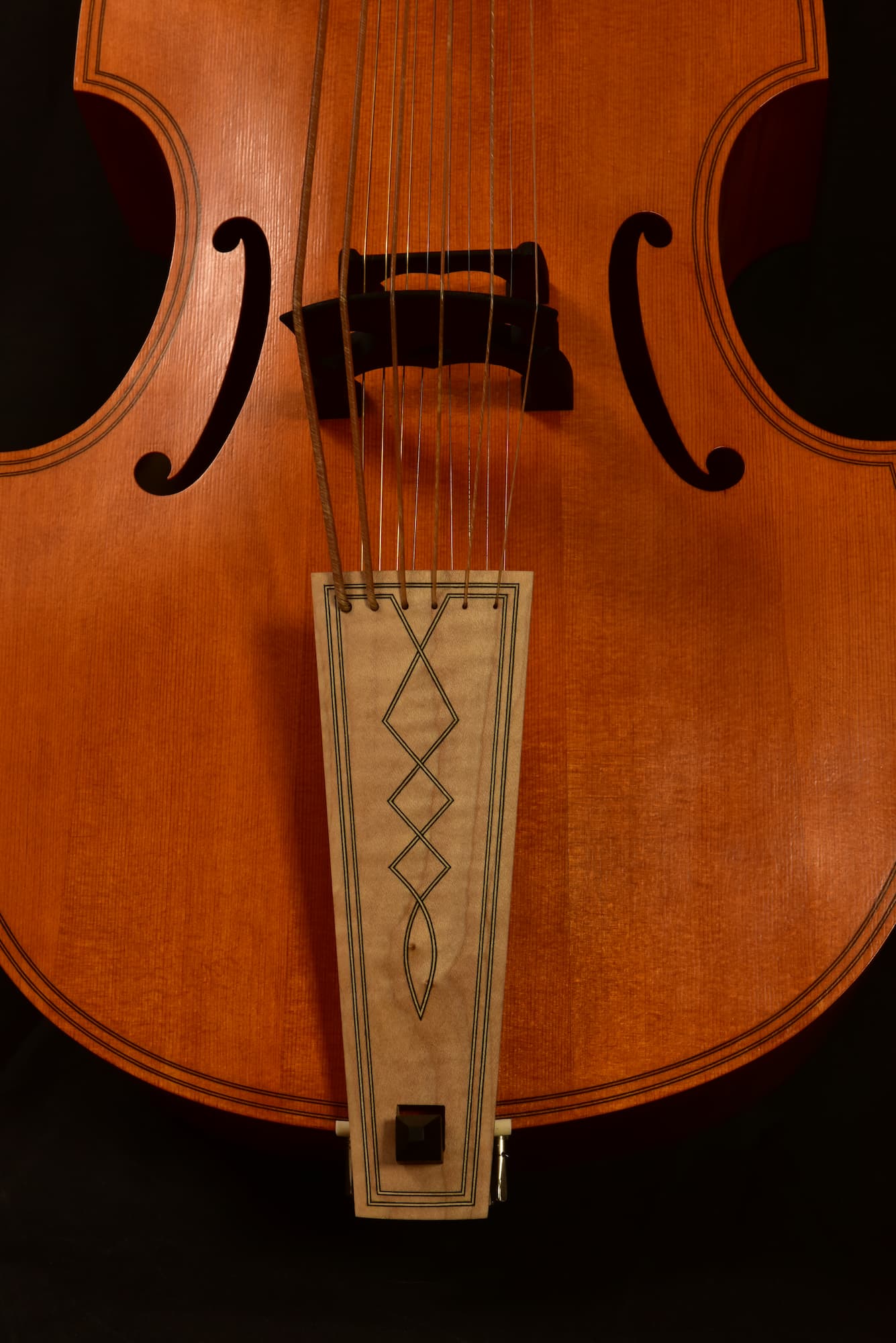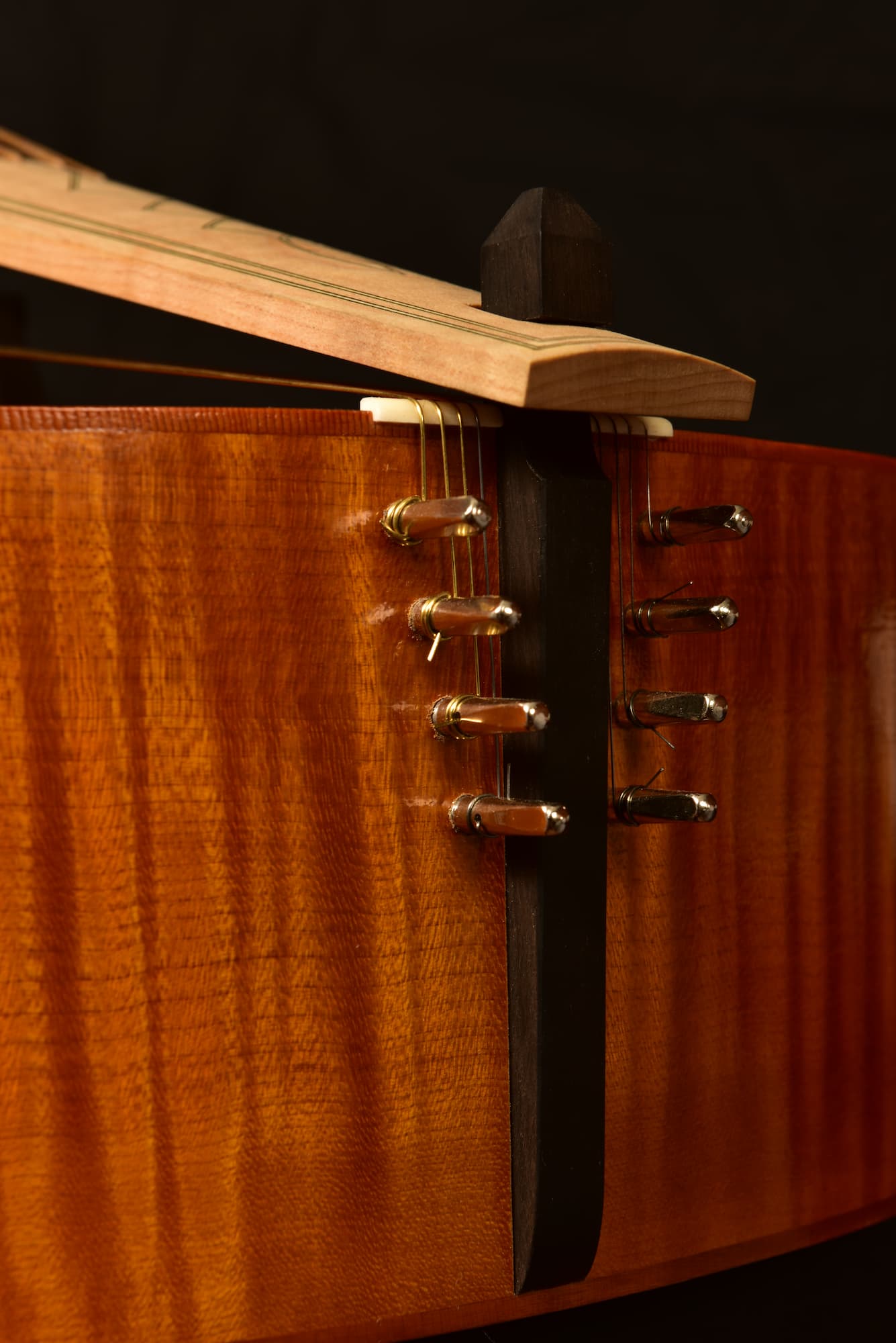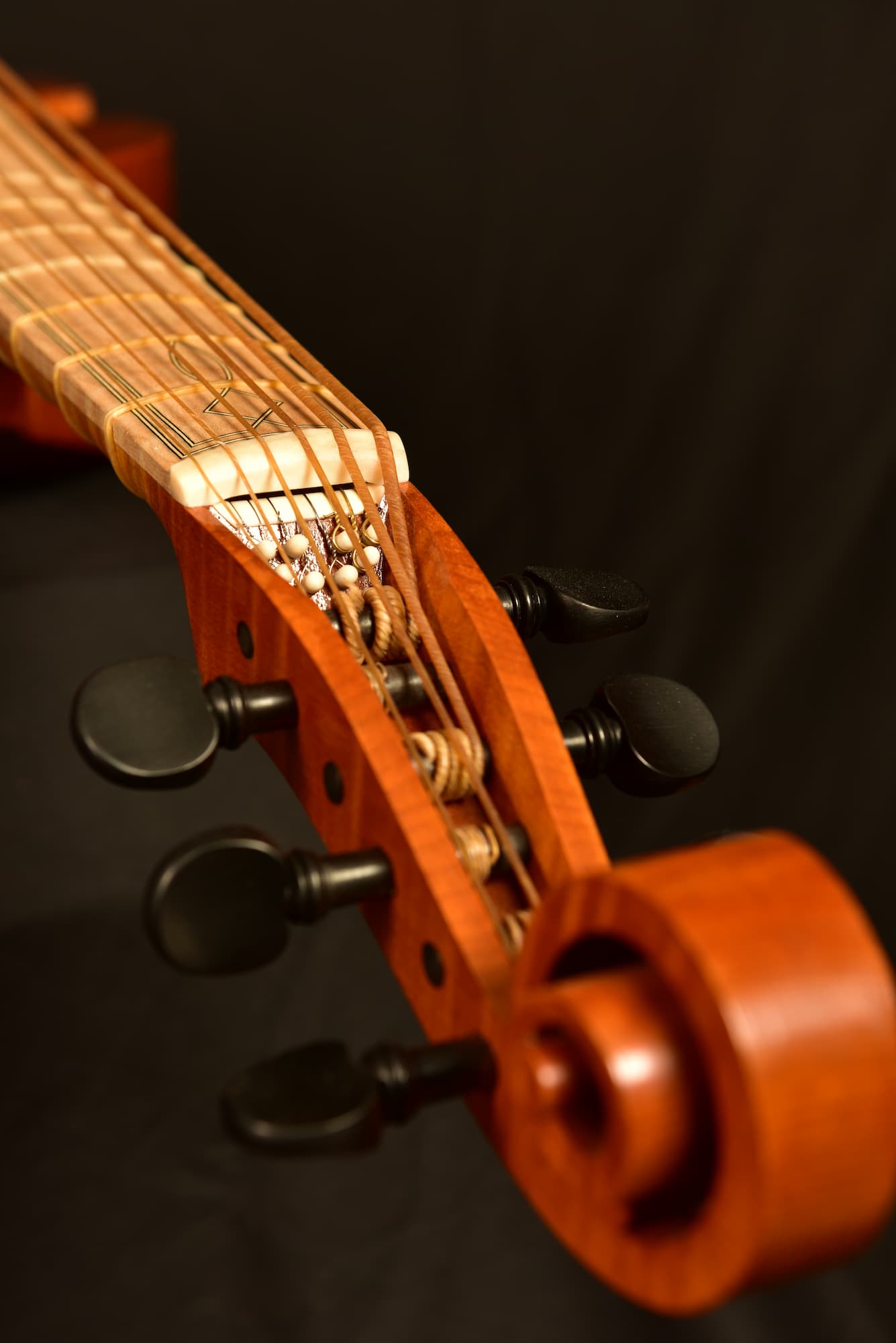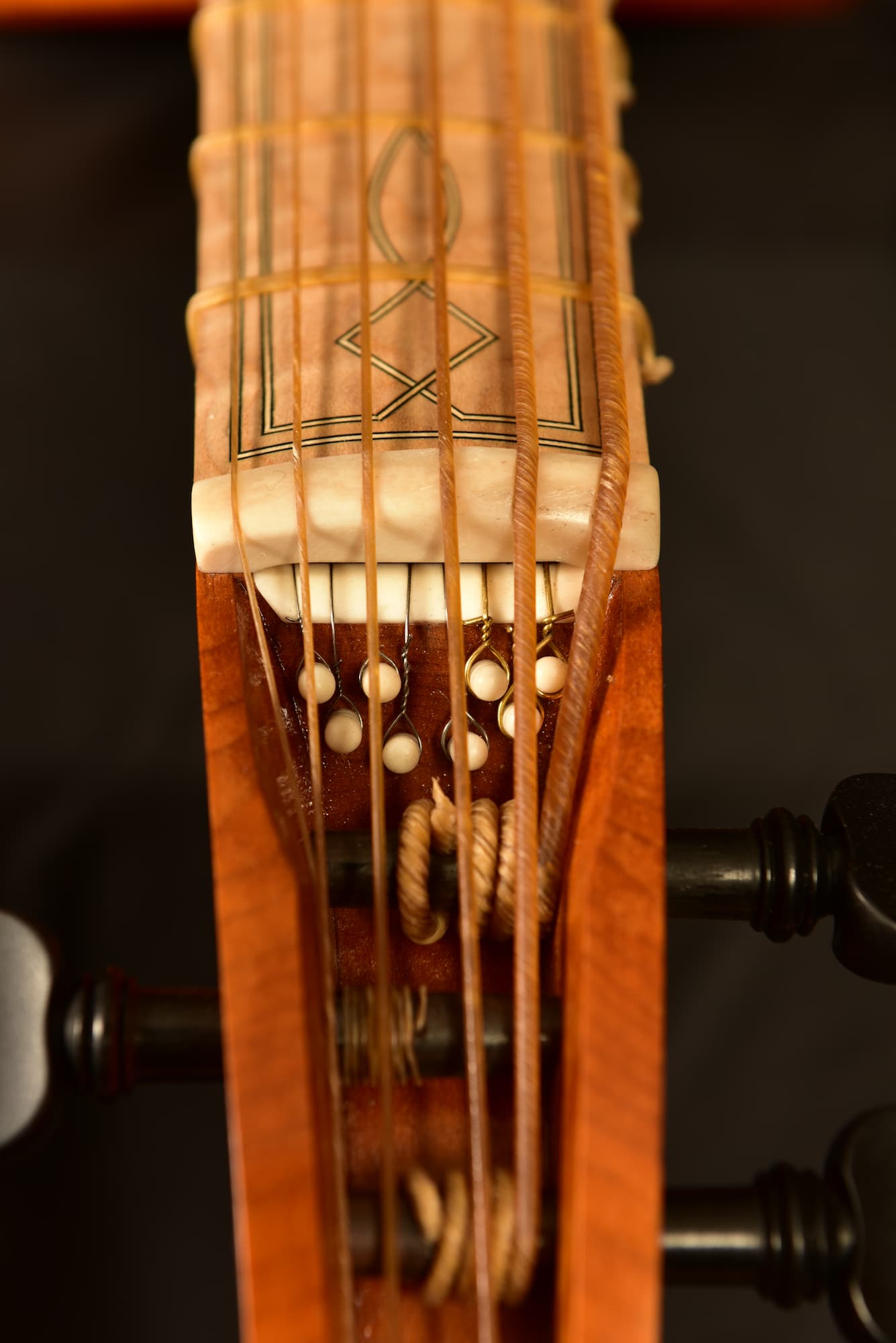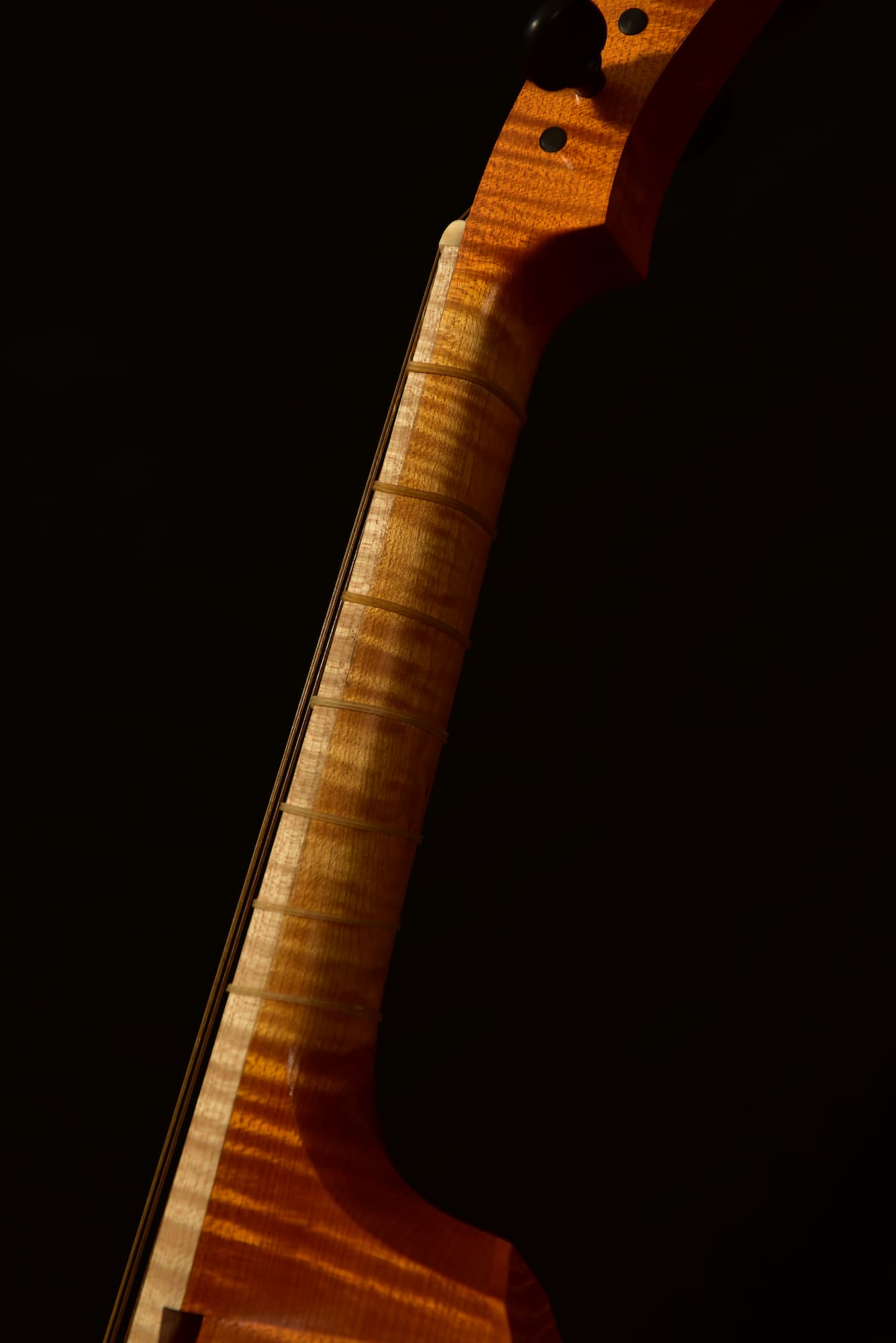Lyra viol based on model: John Rose 1598
TECHNICAL DATA
- Gut string lenght: 610 mm
- Sympathethic string lenght: 565 mm
- Body lenght: 550 mm
Soundboard: Val di Fiemme spruce, 5 bent pieces
Back and sides: Bosnian flamed maple
Neck: Bosnian flamed maple
F/board and T/piece: Bosnian Flamed maple
Pegs, nut and nail: Ebony and bone
Varnish: Oil, fossil amber based and natural pigments
COMMENT:
The lyra viol argument becomes very delicate when you talk about sympathetic strings, very often the number, the position and the tuning of them turns in pure speculation.
That’s exactly what we did, we speculate on it in concert with our client.
Our argument started from the idea that the sympathetic strings were added during the centuries to the old “lyra-viols” and, if they were added, that work had to be as fast and cheap as possible. With this idea in mind, the replacment of a big scroll for 12/14 strings instead of a normal 6 strings scroll looks improbable. In our opinion, more likely, an operation may have been unglue the fingerboard, make a slot inside the neck in order to make the sympathetic string pass trough it and put some little nails in the scroll and some tuning pegs in the lower block. So we decided to anchor the strings on the scroll with little nails we made with a bone “head”, and to tune those strings in the lower part of the instrument with eight harpsichord-style tuning pegs. The result of all of this was really good, the instrument has mantained his original proportion and the tuning of the sympathetic strings is easy thanks to an harpsichord tuning-key. The instrument remains light and balanced and the resonance strings system could almost be defined “reversible”.
Lyra viol based on model: John Rose 1598
TECHNICAL DATA
- Gut string lenght: 610 mm
- Sympathethic string lenght: 565 mm
- Body lenght: 550 mm
Soundboard: Val di Fiemme spruce, 5 bent pieces
Back and sides: Bosnian flamed maple
Neck: Bosnian flamed maple
F/board and T/piece: Bosnian Flamed maple
Pegs, nut and nail: Ebony and bone
Varnish: Oil, fossil amber based and natural pigments
COMMENT:
The lyra viol argument becomes very delicate when you talk about sympathetic strings, very often the number, the position and the tuning of them turns in pure speculation.
That’s exactly what we did, we speculate on it in concert with our client.
Our argument started from the idea that the sympathetic strings were added during the centuries to the old “lyra-viols” and, if they were added, that work had to be as fast and cheap as possible. With this idea in mind, the replacment of a big scroll for 12/14 strings instead of a normal 6 strings scroll looks improbable. In our opinion, more likely, an operation may have been unglue the fingerboard, make a slot inside the neck in order to make the sympathetic string pass trough it and put some little nails in the scroll and some tuning pegs in the lower block. So we decided to anchor the strings on the scroll with little nails we made with a bone “head”, and to tune those strings in the lower part of the instrument with eight harpsichord-style tuning pegs. The result of all of this was really good, the instrument has mantained his original proportion and the tuning of the sympathetic strings is easy thanks to an harpsichord tuning-key. The instrument remains light and balanced and the resonance strings system could almost be defined “reversible”.







